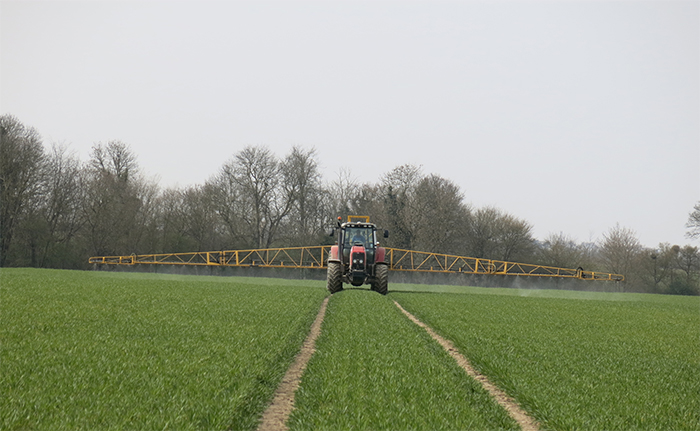
By Mike Abram, PR & Communications Manager, Bayer CropScience
I’ve read in the farming press that all azole fungicides could be banned. Is this true?
Unfortunately, yes. There is a piece of European legislation, which if implemented in an inappropriate manner could result in all azole fungicides, pyrethroids and many other valuable crop protection products being removed from the market.
What legislation is this?
It’s part of the reform of the pesticides approval legislation that happened in 2009. The previous legislation governing approval of pesticides (91/414) was replaced in 2009 by the current legislation 1107/2009.
One of the main reforms was to introduce hazard cut-off criteria; if any active substance breaches such criteria, it is automatically not approved, regardless of whether when a product is used there is negligible risk to that hazard actually causing any harm to the environment or human health.
And endocrine disruption is one of these cut-off criteria?
Yes. But back in 2009 when the legislation was introduced there was no definition of what the cut-off criteria for endocrine disruption should be. So under the legislation there was a requirement for that definition to be set by the end of 2013.
But, as it often the case with European legislation, that timeline has slipped. However, the Commission, as part of the process is currently carrying out an impact assessment, which includes a public consultation, which runs until 16th January 2015.
But what is endocrine disruption anyway – it sounds dangerous?
The endocrine system ensures that animal organs are working properly, and is controlled by hormones. Substances that have the ability to interact with hormones are known either as endocrine active substances or endocrine disrupting substances.
The difference between endocrine active substances and endocrine disruptors is that endocrine active substances have a positive or benign effect – ie no negative effect. Examples of endocrine active substances are coffee, vitamin C and soya milk. The effect they have on our endocrine system is temporary and reversible.
In contrast, a substance should only be considered endocrine disruptive if it can cause irreversible, adverse effects on animal endocrine systems in real life.
So are triazole fungicides endocrine disruptors?
Azole fungicides have come under scrutiny as they work by inhibiting fungal sterols, and thus control fungal diseases. However, sterols also occur naturally in animals and so azole fungicides theoretically could interfere with these, and therefore our hormone system.
This is a theoretical risk, and there is no evidence of that actually happening when these substances are used as directed. Indeed azole fungicides are used as medicines for some fungal infections in the human body, such as athlete’s foot.
So why might they be banned?
It comes back to the hazard cut-off criteria within the legislation. Under one proposal the mere fact that azole fungicides (or other substances) could theoretically interfere with our endocrine system, means that they would fail the cut-off criteria and be removed from market.
But there are counter-proposals that mean when setting the criteria under which endocrine disruption will be assessed there will be elements of risk assessment taken before deciding whether a substance is endocrine disrupting. Under these proposals, there is a better chance that azole fungicides will not trigger the cut-off criteria and will be allowed to remain on the market.
Surely the European Commission will see sense and realise if the risk is only theoretical, and the impact of removing these products from market so high, and set the criteria appropriately?
One would like to think so, but there really is no telling with European legislation. That’s why it is really important farmers, agronomists and other stakeholders in the industry respond to the public consultation, and give their views on what impact this legislation may have on their businesses.
I’ve just looked at the consultation document and I don’t know where to begin. Help?
Yes, it is a bit complicated. It is partly because the European Commission also wants to collect as much information on endocrine disruption as possible to help set the scientific criteria.
Our advice to farmers and agronomists is to fill in section one – personal details, and then skip sections two and three, which are mostly about gathering that information, and concentrate on filling in section four – other information. This is where there is an opportunity to write around 600 words (about an A4 length of normal writing) or attach a document, with your thoughts about how the upcoming legislation on endocrine disruption might affect your business.
What type of things should I consider?
Think about how your business might be affected by the loss of azole fungicides. Don’t forget azole fungicides can be found in products such as Aviator, Siltra and BASF’s Adexar, as well as Proline, Rudis, Ignite and Folicur.
You might also consider what impact would not having access to these products have on disease control and yields on all your crops? What tools would that leave you to control disease - in arable, horticultural and minor use situations? What about the risk of resistance developing to other types of chemistry you use? Would it affect the economic viability of your farm? And what effect might it have on the types of crop and how much food you could produce?
